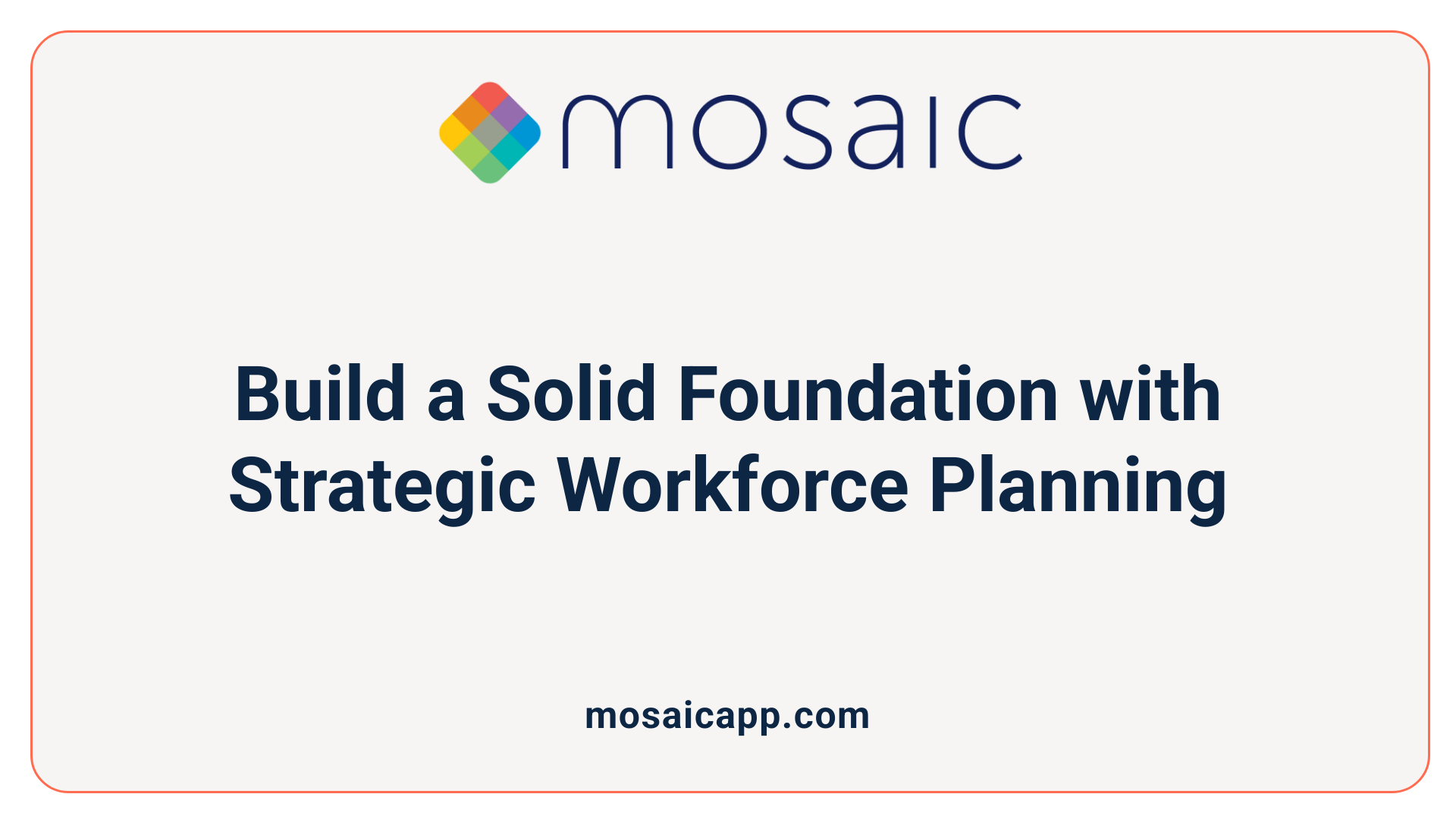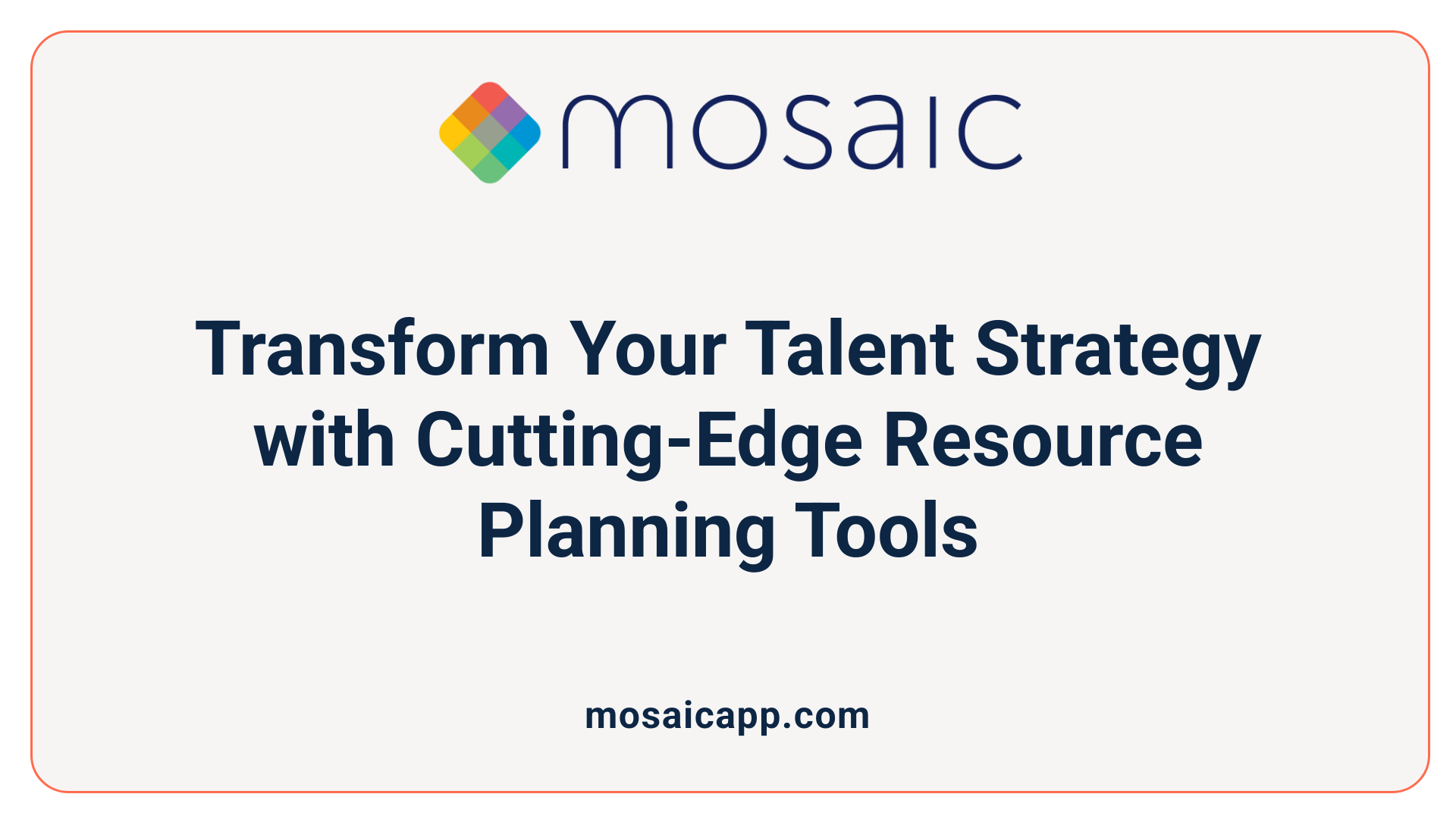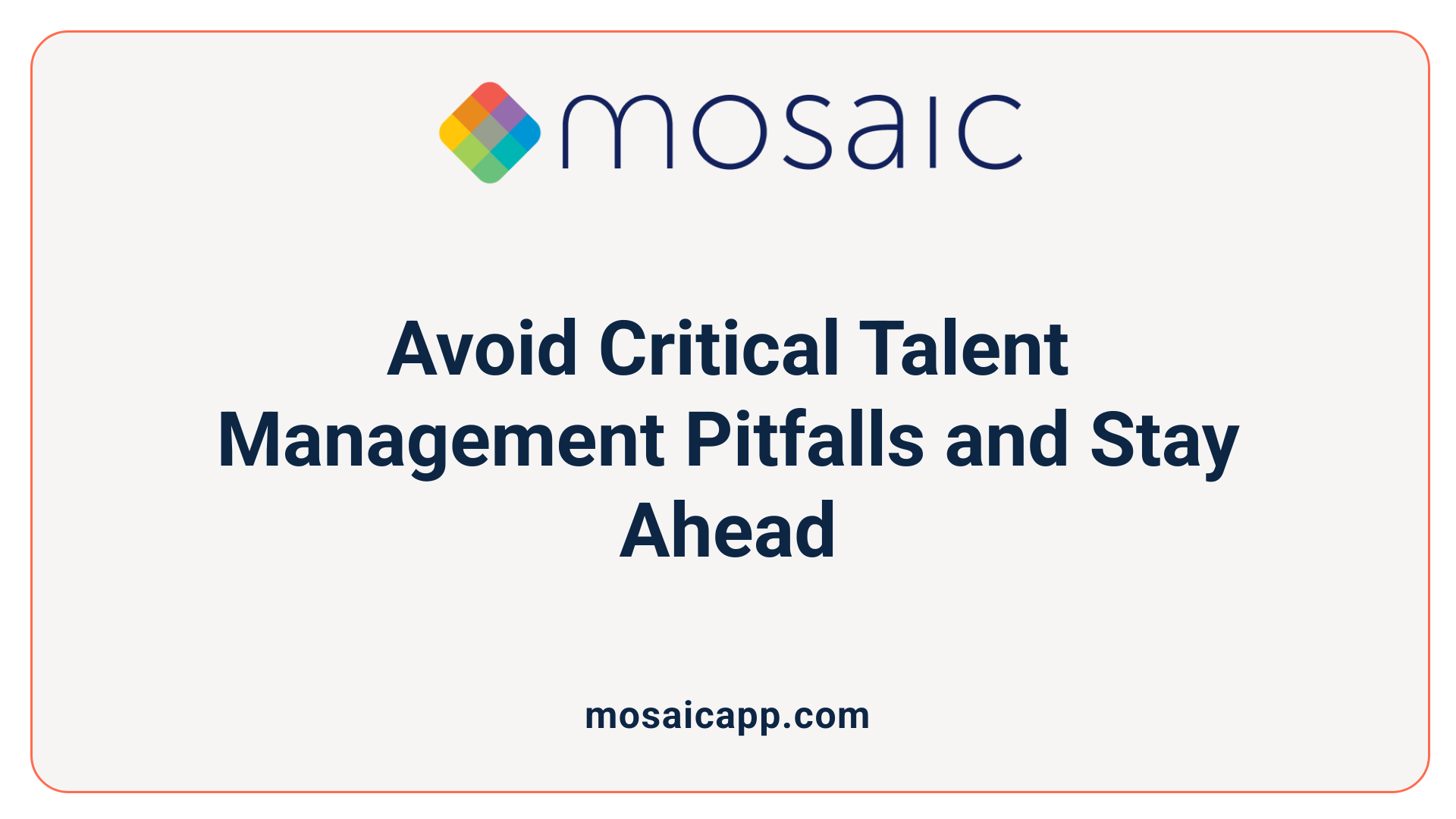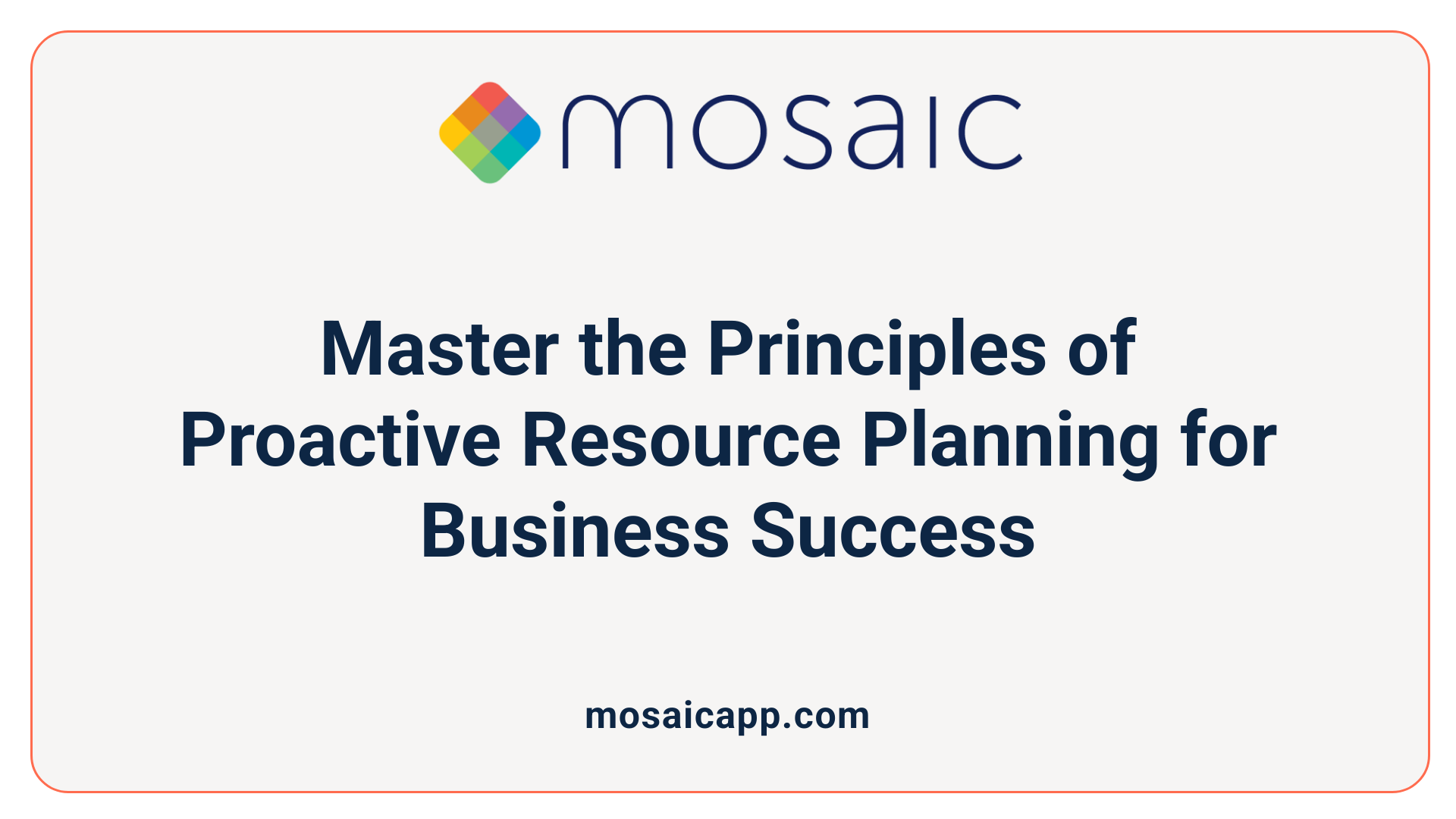Aligning Workforce Strategies with Organizational Success
In today’s dynamic business environment, aligning talent management with resource planning is paramount to sustaining growth and maintaining competitive advantage. This article explores how comprehensive resource management aligns talent effectively with evolving business demands, fostering organizational agility, and driving long-term value creation.
The Foundation of Strategic Workforce Planning in Business Growth

What Is Strategic Workforce Planning and Why Is It Important?
Strategic workforce planning (SWP) is a forward-looking approach that helps organizations ensure they have the right people in the right roles at the right time. It plays a critical role in supporting both short-term business goals and long-term organizational objectives. By taking a proactive stance, SWP enables companies to anticipate future workforce needs and design talent strategies that directly support their evolving business plans.
How Does SWP Align Talent With Business Strategies and Future Projects?
SWP acts as a bridge between human capital and business strategy. It involves close collaboration between business leaders and human resources teams to understand the organization’s roadmap, including upcoming projects and market shifts. This collaboration allows companies to align their current talent pool with future demands, identifying which skills must be amplified, which roles need to be filled, and when to source new talent. Ultimately, this alignment ensures maximum agility and competitiveness in the market.
Why Forecasting Future Skills Is Crucial in SWP?
Forecasting future skills needs is foundational to strategic workforce planning. By analyzing business strategies and upcoming initiatives, organizations can predict the specific competencies required down the line. This foresight guides recruitment, training, and development efforts to close any skills gaps before they impact business outcomes. It also allows for scenario planning to prepare for various market conditions and business disruptions, maintaining a resilient and capable workforce prepared for change.
Leveraging Technology for Enhanced Resource Planning and Talent Management

How does cloud-based resource management software support talent alignment?
Cloud-based resource management platforms, such as Retain, provide a centralized system to maintain an up-to-date inventory of employee skills and availability. This accessibility enables organizations to align talent effectively with current projects and business strategies. Since the data is hosted on the cloud, teams across locations can collaborate in real time, ensuring transparency and responsiveness.
What benefits come from using scenario planning and skill gap identification?
Scenario planning empowers leaders to run 'what-if' analyses, forecasting workforce needs based on potential business changes or project demands. Coupled with skill gap identification, these tools allow organizations to prepare in advance by addressing weaknesses in expertise or coverage. This proactive approach reduces the risk of project delays and enhances overall agility.
Why transition from manual to technology-driven resource allocation?
Manual resource management methods, like spreadsheets, tend to be static and prone to errors, causing inefficiencies and reactive decision-making. Adopting technology-driven resource allocation supports continuous review and strategic adjustments in response to dynamic market conditions and client requirements. Automation minimizes administrative burdens and frees HR and management teams to focus on strategic talent development and retention.
Integrating cloud-based software with advanced analytics creates a more flexible, data-driven framework for resource planning. This shift enhances organizational capability to anticipate workforce challenges, optimize utilization, and ultimately align human capital tightly with business goals.
Holistic Talent Acquisition: Building a Diversified and Future-Ready Workforce
Why is targeting hard-to-find skills important in talent acquisition?
In today's competitive market, securing talent with specialized, hard-to-find skills is crucial for maintaining a company's innovative edge and meeting complex business demands. These rare skills enable organizations to tackle emerging challenges and capitalize on new opportunities, directly impacting their ability to stay ahead in rapidly evolving industries.
How does cultural fit and growth potential influence recruitment?
Beyond skills, assessing cultural fit ensures new hires align with the organization's values and work ethic, fostering a cohesive and motivated workforce. Additionally, evaluating growth potential allows companies to invest in employees who can evolve alongside the business, adapting to future roles and nurturing leadership pipelines.
What strategies support global talent sourcing and referral incentives?
Expanding recruitment to global talent pools introduces diverse perspectives and broadens the skill base, enhancing creativity and problem-solving. Coupled with referral incentives, companies encourage current employees to bring in trusted professionals, improving candidate quality and accelerating hiring timelines. Together, these strategies cultivate a diversified, resilient workforce prepared for future challenges.
Holistic talent acquisition combines targeted skill identification, cultural alignment, and innovative sourcing techniques. This approach builds a future-ready team capable of driving sustained organizational success in a dynamic business landscape.
Investing in Talent Development to Foster Business Agility and Growth
How Do Training, Mentorship, and Challenging Assignments Drive Employee Growth?
Training, mentorship, and challenging assignments form the foundation of effective talent development. Continuous training equips employees with up-to-date skills, enabling them to adapt rapidly in today's dynamic business environment. Mentorship offers personalized guidance, helping individuals navigate their career paths with the wisdom of experienced colleagues. Challenging assignments stretch employees' capabilities, fostering problem-solving skills and confidence.
Why Should Talent Development Begin Early in the Recruitment Process?
Integrating development early, even during recruitment, ensures alignment between employee ambitions and organizational needs from the outset. Early conversations about growth opportunities attract candidates eager to advance their careers, improving engagement and retention. This proactive approach minimizes skills gaps and prepares newcomers to contribute effectively.
How Does Aligning Employee Ambitions with Organizational Goals Enhance Growth?
When employees' personal and professional ambitions align with company objectives, motivation and productivity soar. This alignment fosters a culture of shared purpose, encouraging employees to take ownership of their roles and development. Organizations that support individualized growth plans see improved agility and sustainable performance.
Focusing on comprehensive talent development transforms the workforce into a dynamic asset ready to meet evolving market demands and fuel long-term business growth.
Performance and Succession Management: Ensuring Continuity and Leadership Readiness

What are structured performance management processes?
Structured performance management involves setting clear expectations for employees and ensuring continuous support through regular feedback and formal reviews. This framework relies on a combination of manager and peer evaluations, which together foster a comprehensive understanding of performance levels. Self-reflection by employees is also a cornerstone, encouraging individuals to assess their own progress and align their goals with organizational objectives.
How do feedback, reviews, and self-reflection contribute to effective performance management?
Feedback, both informal and formal, serves to keep employees informed about their work quality and areas that require improvement. Regular performance reviews provide a scheduled opportunity for deeper conversations concerning accomplishments and development plans. Incorporating self-reflection empowers employees to take ownership of their growth, motivating proactive career and skill development. Together, these elements nurture a culture of transparency and continuous improvement.
What are effective succession planning methodologies and how do they prepare future leaders?
Succession planning begins with identifying critical organizational roles and assessing the readiness of potential successors. It includes targeted development opportunities, such as leadership mentoring and challenging assignments, aimed at equipping future leaders with the necessary skills and insights. Scenario planning is another vital component, allowing organizations to anticipate talent gaps and create flexible strategies to address sudden transitions or market changes.
How do performance and succession management ensure organizational continuity?
By intertwining performance insights with succession strategies, organizations create resilience against turnover and skill shortages. Continuous evaluation and targeted development ensure that promising employees are nurtured and prepared to step into leadership roles, maintaining operational stability. This proactive approach reduces disruption and supports ongoing business growth in a competitive environment.
Avoiding Common Pitfalls in Resource and Talent Management

What are the risks of neglecting employee aspirations?
Ignoring employee aspirations can lead to disengagement and high turnover. When staff feel their personal and professional goals are overlooked, motivation dips, reducing productivity and impacting organizational growth. Strategic workforce planning stresses aligning personal ambitions with company needs early on, especially during recruitment and talent development, to maintain a motivated and committed workforce.
What challenges arise from relying on intuition rather than data-driven decisions?
Relying heavily on intuition in resource and talent management often results in misaligned hiring and development decisions. Without leveraging data insights and analytics, organizations may overlook skill gaps, misjudge workforce capacity, or fail to predict future needs accurately. This can hinder agility and reduce overall performance. Employing software tools and continuous data review supports proactive and informed decision-making.
Why are static and manual resource management approaches limiting?
Traditional manual methods, like managing resources in spreadsheets, are inflexible and prone to errors. They lack real-time visibility into talent availability and project demands, causing last-minute chaos and missed opportunities. Modern resource management emphasizes adopting cloud-based platforms and automation to enable scenario planning, real-time monitoring, and strategic capacity planning, enhancing organizational responsiveness and growth potential.
Principles and Key Elements of Proactive Resource Planning

What Are the Core Principles of Proactive Resource Planning?
Proactive Resource Planning (PRP) is grounded in several foundational principles that drive its effectiveness. One major principle is strategic alignment, which ensures that resource allocation directly supports the organization's overall business goals. Another critical principle is value-based prioritization, allowing teams to focus efforts where they create the most benefit.
PRP also emphasizes continuous demand forecasting to anticipate resource needs well before they arise. This forward-looking approach helps avoid last-minute chaos and ensures smooth project execution. Lastly, a human-centric approach considers not only skills but also employee motivation and burnout risks, recognizing that workforce wellbeing is key to sustained performance.
How Are Centralized Skill Inventories and Demand Forecasting Utilized?
A vital element of PRP is maintaining a centralized resource and skill inventory. This database tracks the capabilities, availability, and experience of each employee, facilitating quick and accurate resource allocation.
Coupled with this is proactive demand forecasting, which involves regularly analyzing upcoming projects and business initiatives to project the types and quantities of resources required. By forecasting demand continuously, organizations can identify skill gaps early and initiate training, hiring, or reallocation plans.
What Role Do Workforce Capacity Planning and Risk Mitigation Play?
Workforce capacity planning ensures that the organization has the right number of employees with appropriate skills ready to meet forecasted demands. It involves evaluating current capacity against future needs and implementing hiring or upskilling strategies as needed.
Risk mitigation is integrated through scenario planning and real-time performance monitoring. By modeling different 'what-if' scenarios, organizations can prepare contingency plans to handle unexpected changes like sudden project scope shifts or employee turnover. This flexibility protects against delivery delays and budget overruns.
Together, these principles and elements enable an optimized, agile workforce aligned with business priorities and ready to adapt to evolving market conditions.
Integrating Talent Management with Business Objectives for Measurable Outcomes
What are the comprehensive components of talent management?
Talent management is a broad and strategic approach that covers several vital components to ensure organizational success. It begins with recruiting, which includes sourcing the right talent through effective hiring and onboarding processes, emphasizing diversity and inclusion. Next, retention strategies aim to keep high performers motivated and engaged by understanding what drives them, fostering intrapreneurship, and providing continuous real-time feedback.
The learning and development segment upskills employees through courses, professional mentoring, and leadership preparation. Finally, the compensation component aligns reward systems with long-term organizational goals, emphasizing goal-based bonuses and salary structures that recognize sustained achievement.
How do talent strategies align with business results?
Aligning talent management with business objectives is crucial for achieving measurable outcomes. Strategic workforce planning ensures that the organization's talent pool is aligned with both short- and long-term goals. By tying recruitment, development, and compensation directly to business strategies, companies can address talent gaps, foster engagement, and drive growth.
This integration promotes a high-performance culture and a strong employer brand, facilitating better decision-making and supporting agile workforce adaptation. Talent planning also incorporates personal ambitions, cultural fit, and potential growth, ensuring that employees contribute effectively to business results.
How can KPIs measure the success of talent management?
Key performance indicators (KPIs) provide the metrics needed to track the effectiveness of talent management initiatives. Important KPIs include:
- Employee satisfaction: Gauges overall engagement and morale.
- Retention rates: Measures the organization's ability to keep top talent.
- Internal mobility and promotion rates: Indicates growth opportunities and career development.
- Progress on diversity, equity, and inclusion (DEI) initiatives: Reflects inclusivity and cultural health.
Using technology tools like human capital management (HCM) platforms allows organizations to collect real-time data, monitor progress, and make data-driven adjustments for continuous improvement.
This data-centric approach ensures talent management contributes directly to organizational performance and supports sustainable growth.
Emerging Trends Shaping Resource and Talent Management for Future Growth
How is AI, Data Analytics, and Automation Transforming Talent and Resource Management?
AI-driven predictive analytics and automation are revolutionizing how organizations forecast and allocate resources. These technologies enable real-time decision-making, scenario modeling, and skill gap analysis, which improve accuracy in demand forecasting and resource utilization. Automation accelerates routine processes such as onboarding, performance tracking, and feedback management, freeing HR professionals to focus on strategic tasks. Advanced dashboards provide visual insights for better talent oversight and workforce planning.
Why is Diversity and Inclusion (DEI) Vital in Modern Talent Management?
Diversity and inclusion initiatives have become integral to attracting and retaining top talent globally. Companies are building diversified talent pipelines by tapping into global sources and encouraging employee referrals. Emphasizing DEI enhances innovation and company culture by fostering a variety of perspectives and experiences. Success metrics now include progress on DEI initiatives alongside traditional performance indicators, ensuring organizations remain accountable and inclusive.
How is Employee Experience Enhanced in Remote and Hybrid Work Models?
Enhancing employee experience, especially in remote and hybrid environments, is a major trend shaping talent management. Strategies focus on continuous feedback, goal alignment, and creating a high-performance culture regardless of location. Utilizing human capital management (HCM) software, companies support engagement and learning virtually. Flexible resource planning accommodates shifting work settings while maintaining productivity and employee satisfaction.
These emerging trends collectively drive business agility, sustainable growth, and an empowered workforce ready to meet the evolving demands of the market.
Continuous Improvement and Adaptation: The Pathway to Sustained Organizational Agility
Ongoing Monitoring and Adaptation of Resource Strategies
Continuous monitoring of resource and talent strategies is essential for organizations aiming to maintain agility in a rapidly evolving market. By regularly reviewing workforce data, demand forecasts, and performance metrics, companies can identify emerging skill gaps and adjust their planning proactively. This approach prevents reactive responses and supports seamless alignment with shifting business priorities.
Importance of Flexibility and Technology Integration
Embracing flexibility in resource planning enables organizations to respond swiftly to unanticipated changes, such as fluctuating project demands or market disruptions. Modern technology plays a critical role by moving beyond static tools like Excel to dynamic software platforms offering real-time data and scenario modeling. Integrating AI-driven analytics, automated forecasting, and centralized skill inventories empowers leaders to optimize resource utilization efficiently.
Driving Adoption and Overcoming Resistance to Change
Successful adoption of continuous improvement initiatives requires addressing resistance at all organizational levels. Communicating the benefits of new tools and processes, involving stakeholders in decision-making, and providing targeted training help ease transitions. Additionally, establishing clear KPIs and celebrating quick wins can motivate teams to embrace ongoing adaptation efforts, ultimately fostering a culture of innovation and resilience.
These focused actions—consistent monitoring, flexible methods enhanced by the latest technology, and active change management—create a robust framework. This framework empowers organizations to sustain agility, improve workforce effectiveness, and achieve long-term growth despite market volatility.
Synchronizing Talent and Resource Management to Propel Business Success
Effective resource management serves as a critical bridge between talent and business growth, enabling organizations to anticipate needs, deploy skills strategically, and cultivate a workforce agile enough to navigate evolving market demands. By integrating advanced technology, fostering robust talent management practices, and committing to continuous improvement, businesses can secure sustained growth and a resilient competitive edge in a rapidly changing world.


